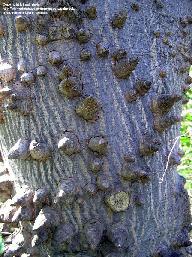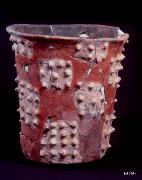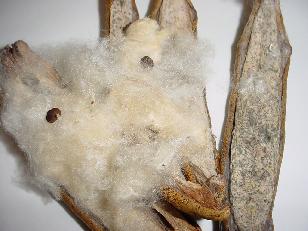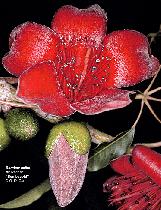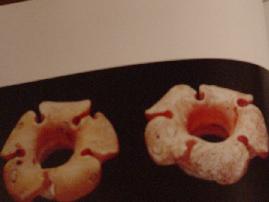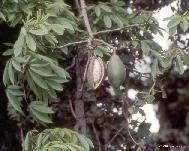| Family: | Bombacaceae |
| Genus: | Ceiba |
| Species: | pentandra |
| Authority: | (L.) Gaertn. |
| Common Name: | ceiba tree, silk cotton tree, kapok or inup |
| Maya Name: | 'Ya'axche'- "green tree" or 'yáaxche' – "first tree" |
| Depictions: | Incensarios and burial urns |
| Maya Plant Use: | Ritual use, products, fuel, food, medicine, construction or oil. Fiber used for cloth & stuffing pillows. |
| Botanical Significance: | Trunk thorns of the kapok tree were present frequently as appliqué on incensarios and burial urns. The silky seed hairs (silk) of Ceiba pentandra also were used in stuffing pillows and cushions (Schlesinger 2001), which may have been used by the elite to cushion the hard stone benches in royal palaces. Because the ceiba tree was sacred to the Maya (Grube 2001), its trunk thorns were depicted on Maya ceramics for centuries (Schele and Mathews 1998). Spiked vessels and lids depict this revered connection to the ceiba tree. |
| Ritual Significance: | Connection of the underworld to the heavens.
The World Tree (Wakah-Kan, “Raised-up Sky” or “Six Sky”) can be seen on the lid of Pakal’s tomb. The te’ sign for “tree” as well as branches terminating in beaded flowers and serpents personifying the stamens of the blossoms can also be seen. |
| Notes: | Bat pollinated. |
| Photos: | Click on an image below for high resolution comparison. |

